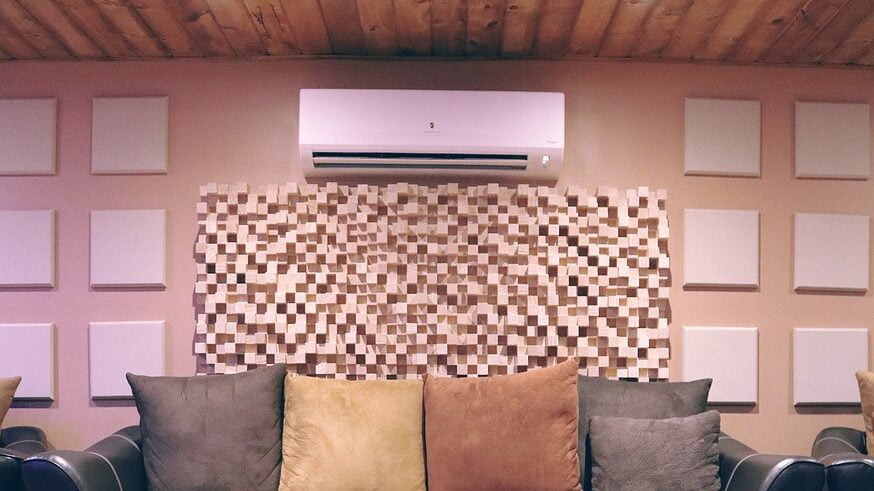How to Soundproof a Room
Soundproofing a room is an effective way of limiting the amount of sound that travels between rooms. An additional benefit is that it can improve acoustics within a given space, making music or conversation more enjoyable in certain settings.
In this blog post, we will discuss the basics of soundproofing, including understanding the need, assessing acoustic levels, choosing appropriate materials, different techniques, DIY vs professional installation, and ultimately the benefits of having a soundproofed room.
How to make any room Soundproof

- Seal any gaps around the walls, floors, or ceiling:
- Use caulking to fill in cracks and crevices to reduce sound entering or leaving the room.
- Install door thresholds to create a tight seal between the door and entryway.
- Add insulation:
- Install insulation on all sides of the room for maximum sound absorption.
- Choose materials that are thick enough to block out noise from outside.
- Apply acoustic panels:
- Hang acoustic panels on walls and ceilings for additional soundproofing capabilities.
- These can help absorb higher frequencies more efficiently than other materials.
- Cover windows with blackout curtains:
- Blackout curtains will help keep exterior noise from coming in through glass surfaces.
- Thick fabrics like velvet and wool work best for providing extra levels of soundproofing capabilities.
- Secure carpets and rugs:
- Place heavy rugs or carpets along floorboards to prevent reverberation within the room.
- This creates an effective barrier against noises traveling up through the floorboards into the space below them.
Assessing the Need for Soundproofing

Before undertaking any kind of soundproofing activity, it’s important to assess exactly what needs to be achieved. This involves identifying how much noise reduction is required, as well as where it is needed most.
Consider whether there are specific areas that require extra attention or if all corners should be addressed equally.
Taking proper measurements with respect to dB level and frequency analysis can help determine what type of soundproof material should be used and how much insulation per square inch will be necessary.
Understanding Acoustics
In order to properly understand acoustics, one must become familiar with its two key elements: reflection and absorption.
Reflection occurs when sound bounces off surfaces while absorption relates to how quickly and effectively sound waves move through various materials.
Depending on these parameters, certain types of materials can be chosen for adequate soundproofing.
Choosing Appropriate Materials
When selecting materials for soundproofing, look at properties such as density (the heavier the better), porousness, rigidity, and thickness – each of which affects reverberation time and vibration-dampening potency.
Examples include foam mats/tiles, mineral wool insulation, cork tiles, varnished wood panels/fiberboard sheets, etc., which all have their own unique features contributing towards optimal acoustical design.
It’s important to ensure each material is compatible with existing structures, so check manufacturer specifications prior to purchase!
Techniques for Soundproofing Different Parts of the Room
There are many different techniques available depending on location: walls, ceilings, or floors.
All involve some form of blocking air gaps, applying decoupling solutions like rubber slabs or fiberglass boards over structural cavities, adhering insulation to inner walls, etc.

While this may seem intimidating at first glance, fortunately, there are plenty of online guides that offer step-by-step instructions with diagrams providing helpful visualizations along the way.
DIY vs Professional Installation
Depending on individual experience level (or lack thereof) DIY projects could prove challenging without access to special tools for cutting and shaping components accordingly.
On the other hand, professional installations provide comprehensive coverage from end to end but often come at higher costs due to hiring contractors and purchasing high-grade raw materials from specialized retailers (upfront payments).
Making sure both approaches are carefully evaluated before committing to either direction would save money in the long run without sacrificing quality/results.
Benefits of Soundproof Room or Studio
The main intention behind installing adequate acoustic considerations is improved privacy leaving occupants nice & secure inside their own bubble away from external noises such as traffic or neighborhood kids at playtime etc.
This allows them to relax undisturbed or concentrate efficiently on work-related tasks free from potential distractions presented outside home limits.
But aside from sheltering internal quietude, professionally designed interiors also present tremendous opportunities for enjoying music/movies throughout the entire property with superior clarity offered compared to not having sufficient noise control measures implemented directly.

In a soundproofed studio, you can record vocals and instruments and mix songs without any disturbance or noise.
Final Thoughts
Soundproofing a room is an effective way to mitigate noise pollution and create a peaceful space. It requires the use of acoustic insulation materials like foam panels, mass-loaded vinyl, drywall, and carpets.
With the right materials and installation techniques, you can easily reduce outside noise levels and ensure you always have a quiet and comfortable place to call home.
I hope you liked this post.
- BPM Tapper: Tap to check and Find Tempo Online - February 4, 2025
- How to Soundproof Windows: Top Methods Explained - September 22, 2024
- 8 Essential Ukulele Chords for Beginners - September 19, 2024
